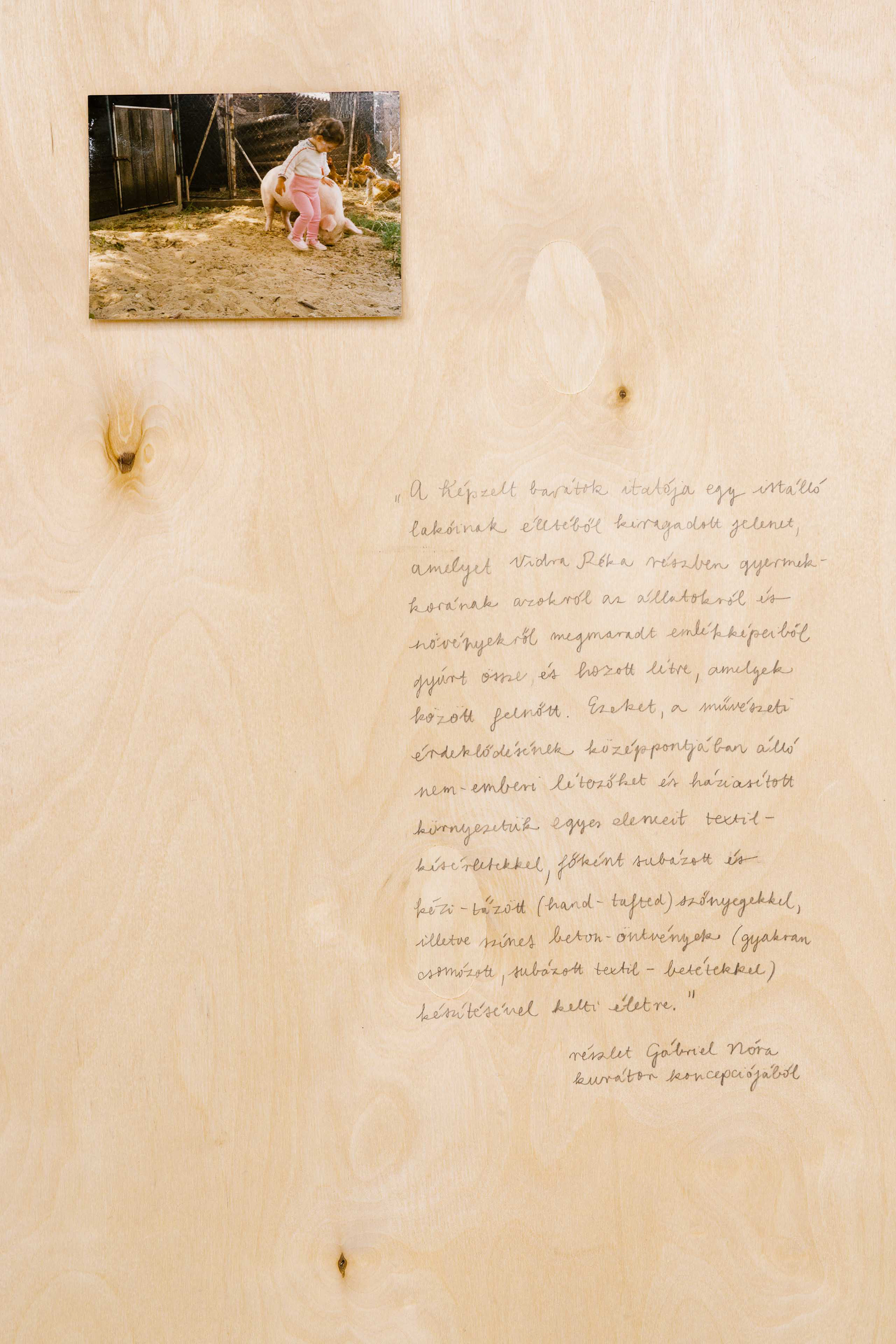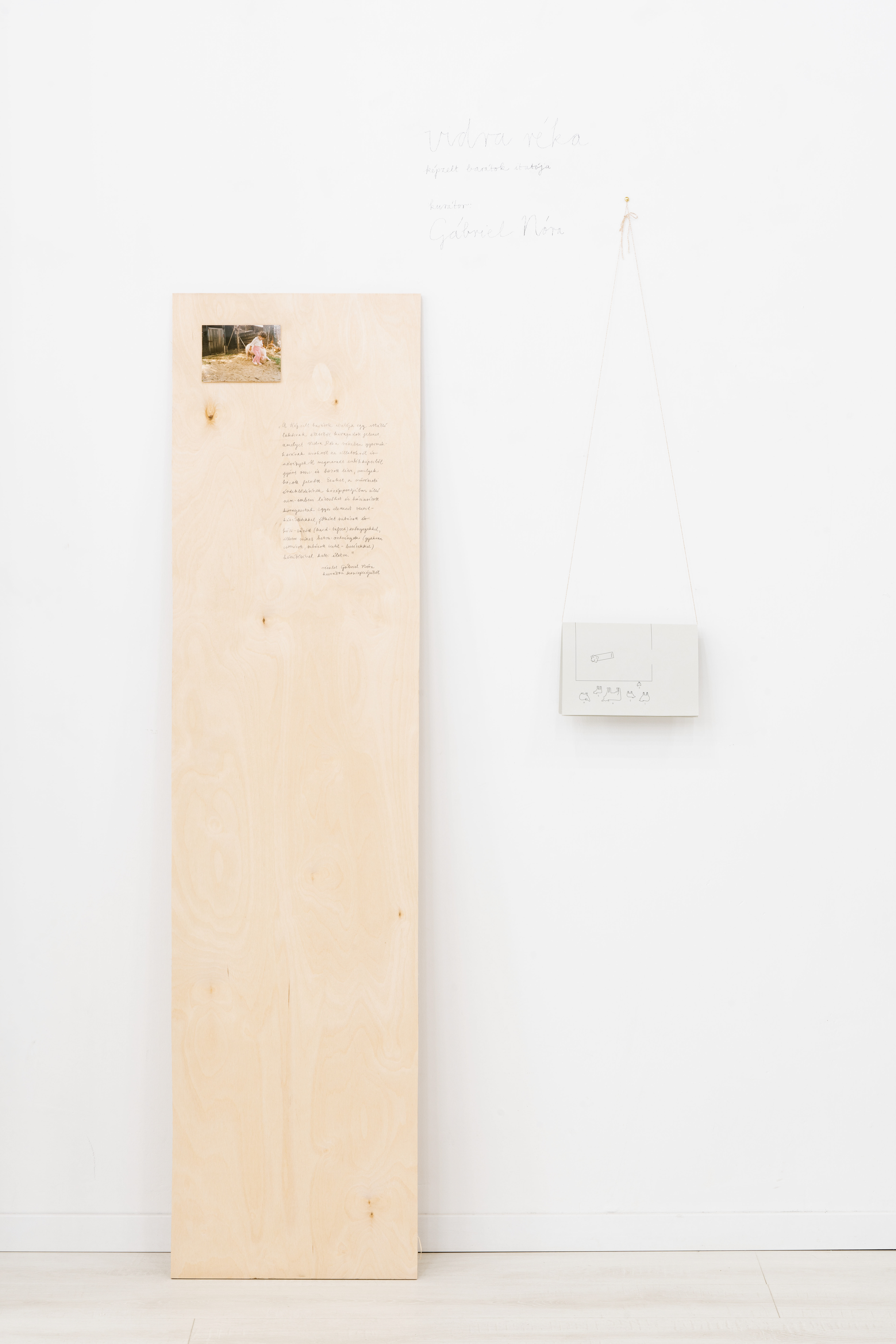The solo exhibition "Water-trough of imaginary friends" took place at Nyolcésfél, Budapest, from 17th to 30th November, 2022. It has been recorded as a virtual 3D tour by Digitális Képműhely.
Freckled cow
(hand tufting, punching, mixed yarns, 195×140 cm, 2022.)
Ewe
(hand tufting, punching, mixed yarns, 120×80 cm, 2022.)
Blue calf
(hand tufting, punching, mixed yarns, 80×80 cm, 2022.)
Pintyőke, our bullied chicken, who laid two eggs a day
(hand tufting, punching, mixed yarns, 40×40 cm, 2022.)
Lamb
(hand tufting, punching, mixed yarns, 80×80 cm, 2022.)
Mangalica before heart-transplant, looking at the sky
(hand tufting, punching, mixed yarns, 100×80 cm, 2022.)
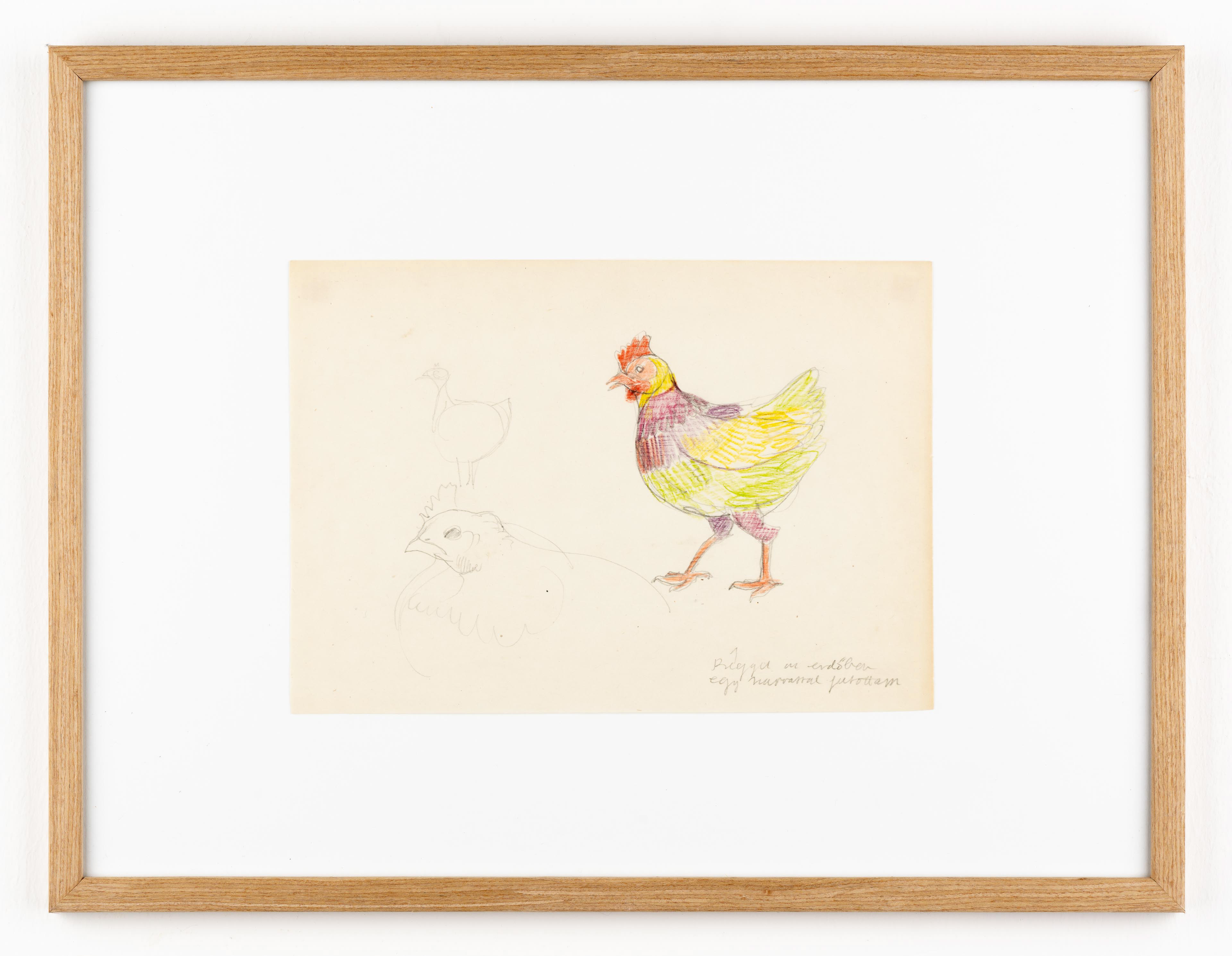
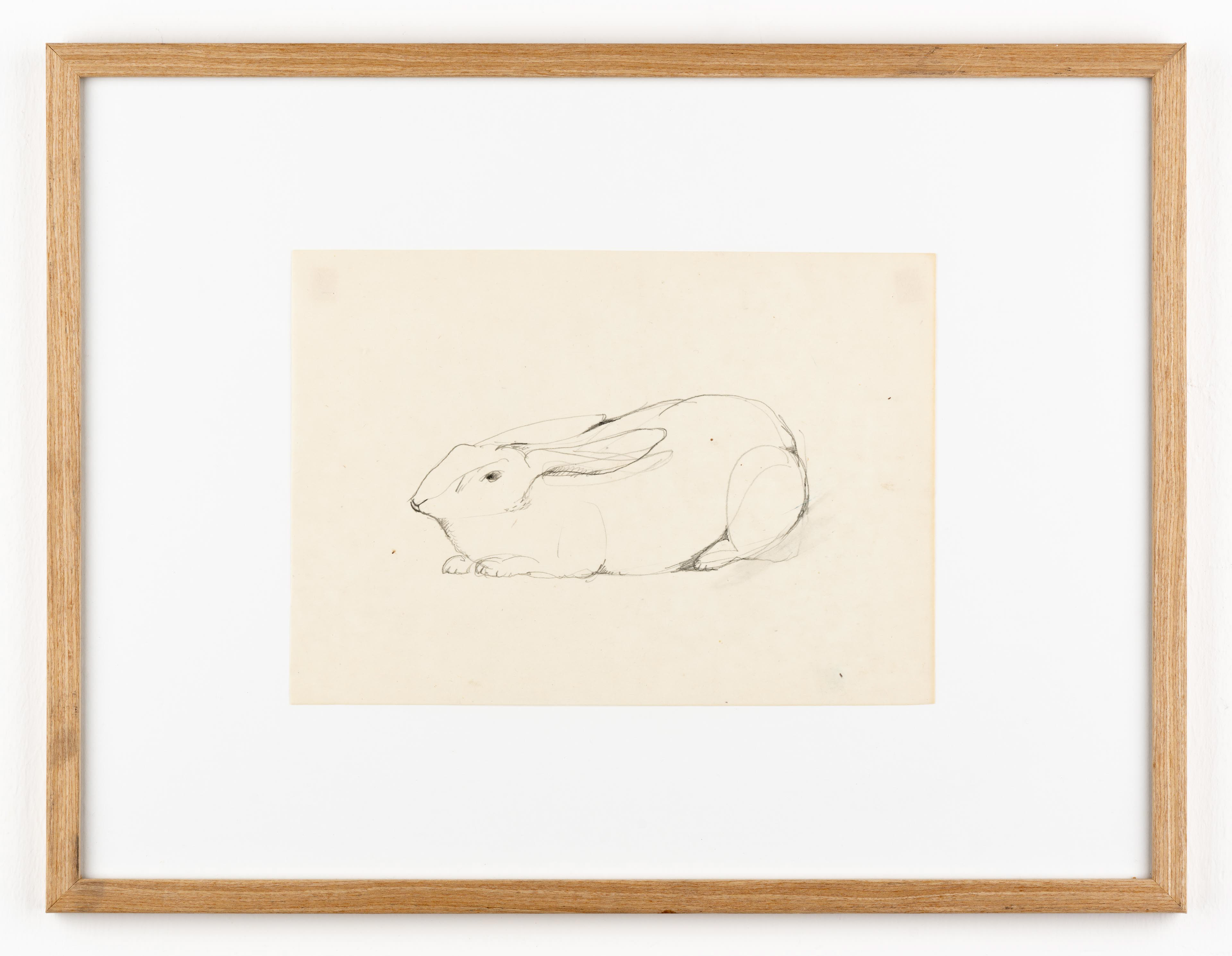
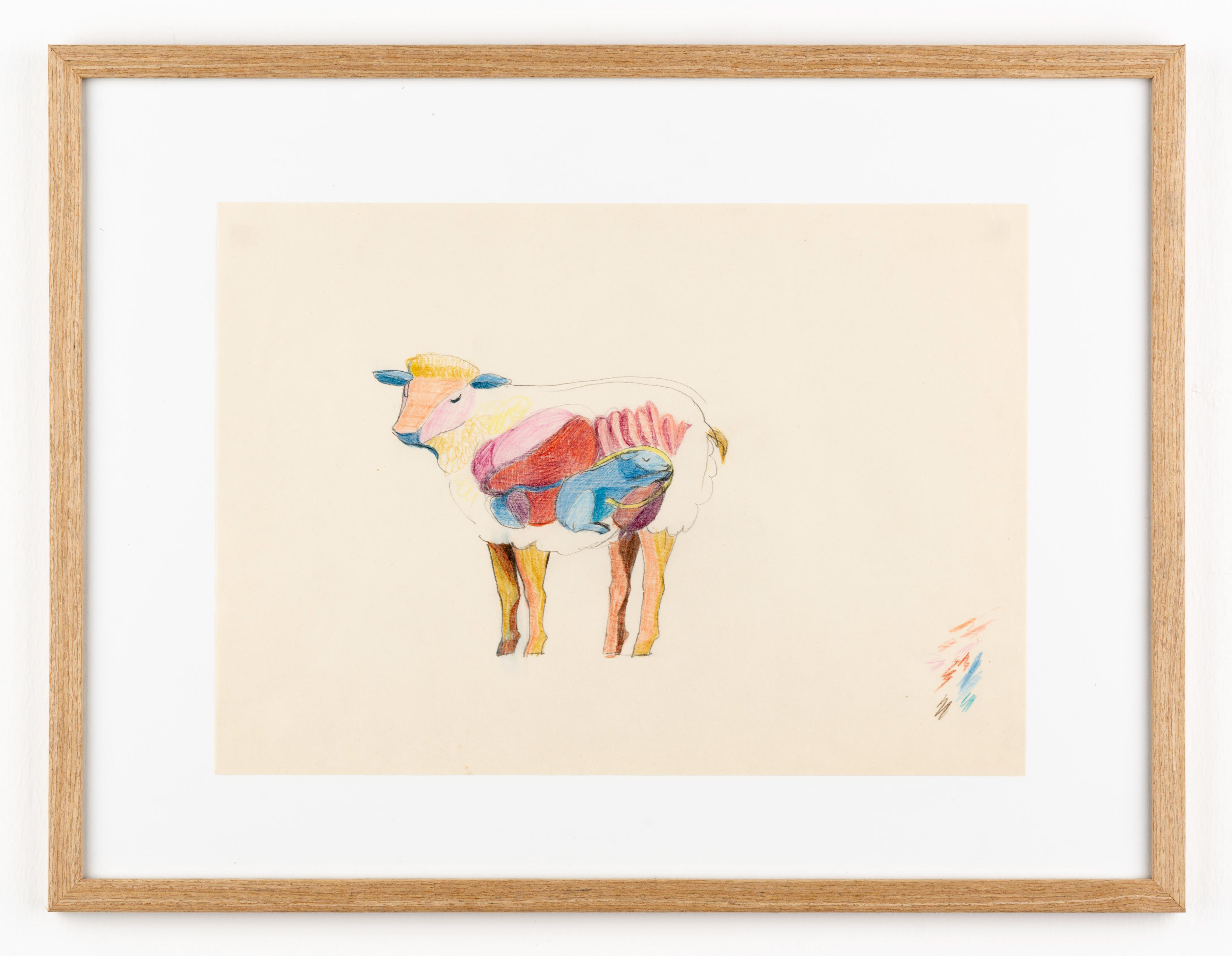
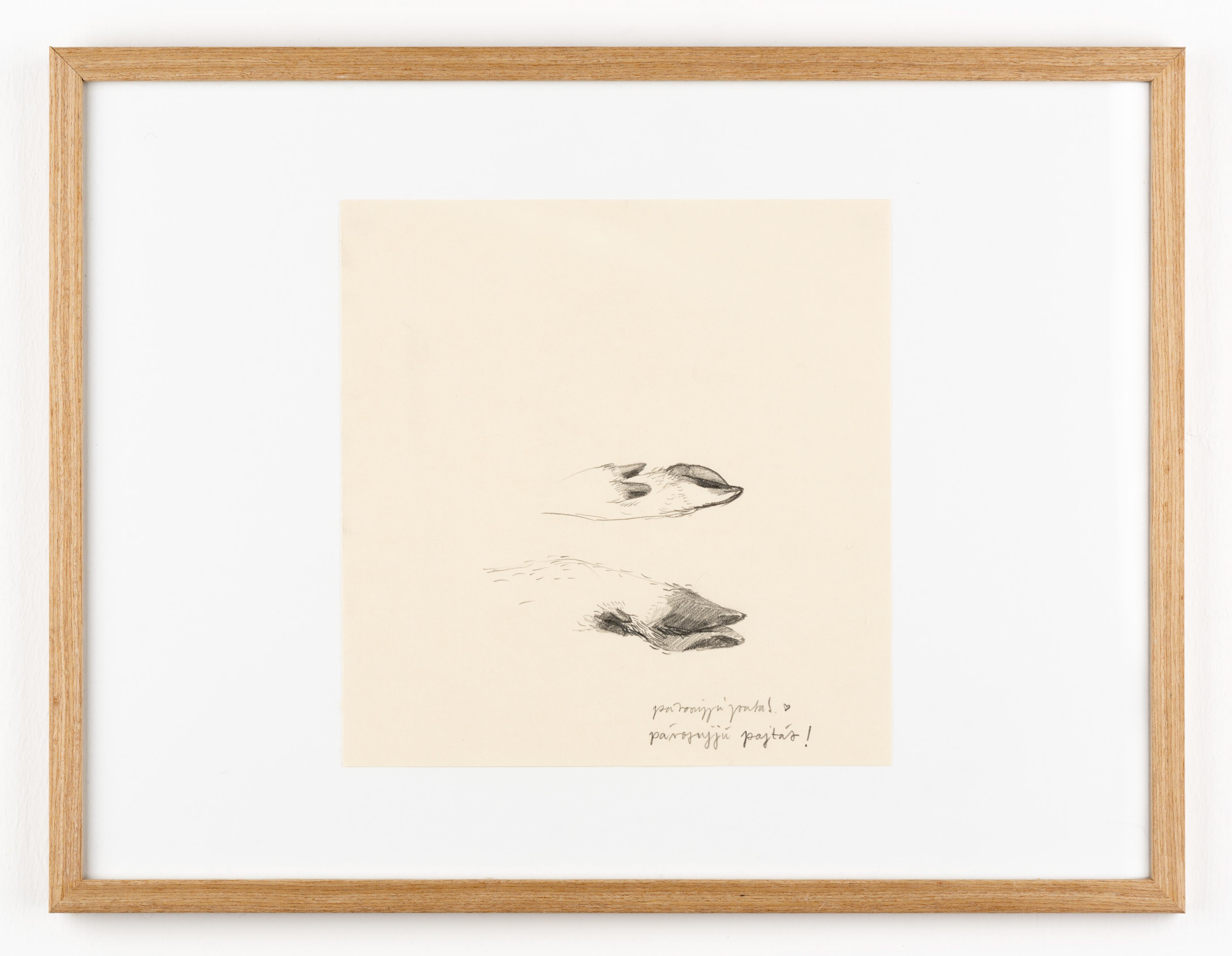
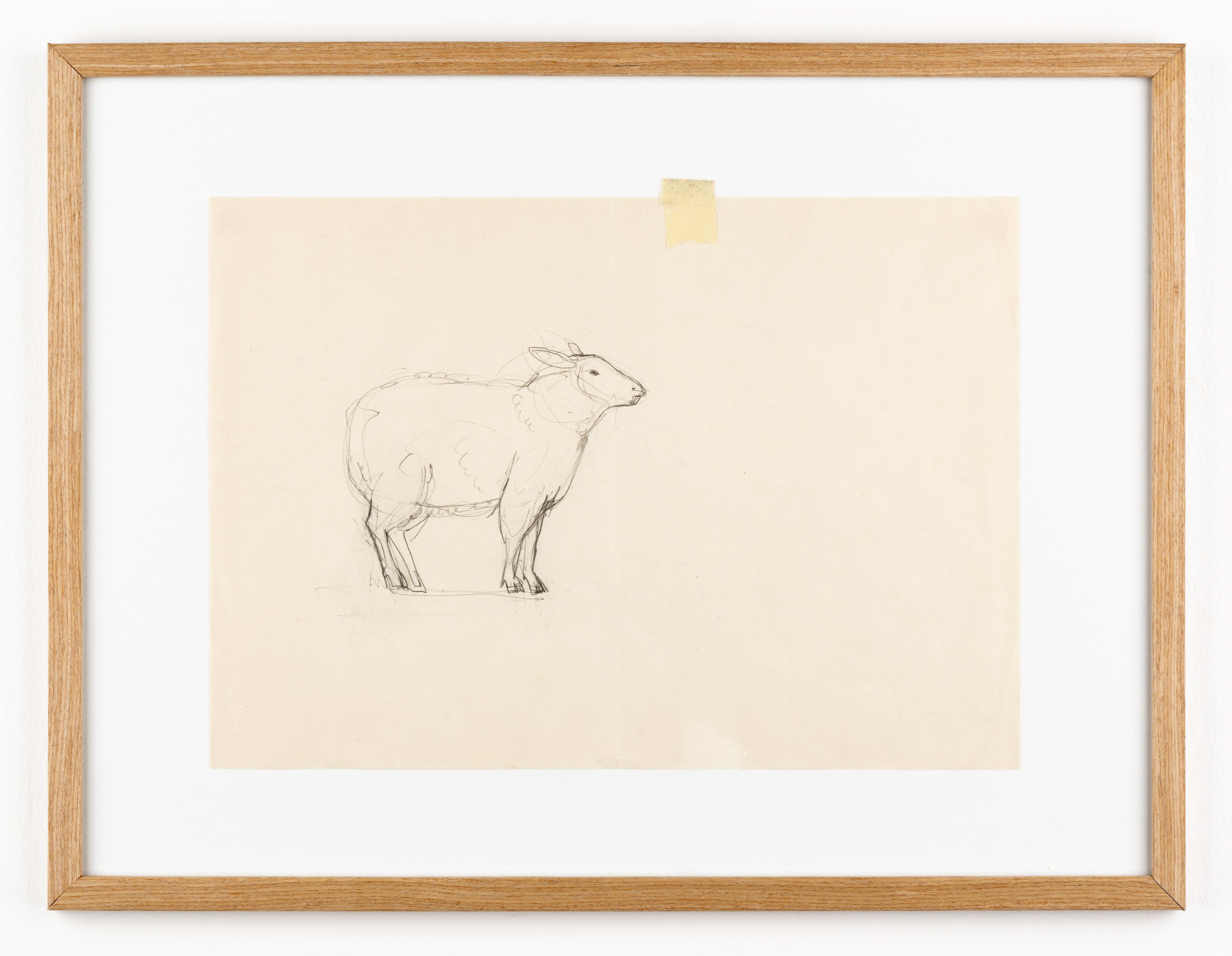
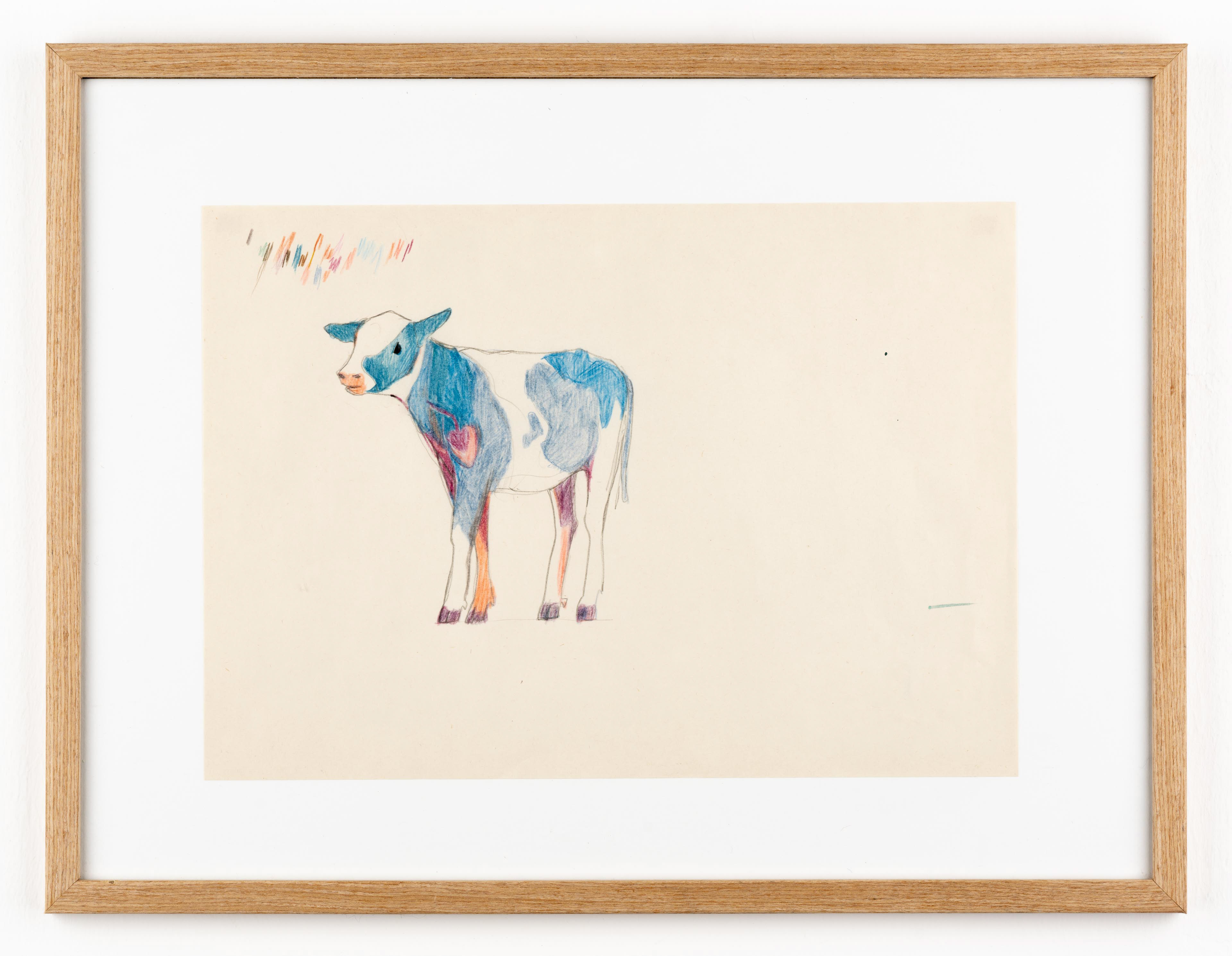
Untitled 1-6 (paper, pencil, 21×29 cm, 2022.)
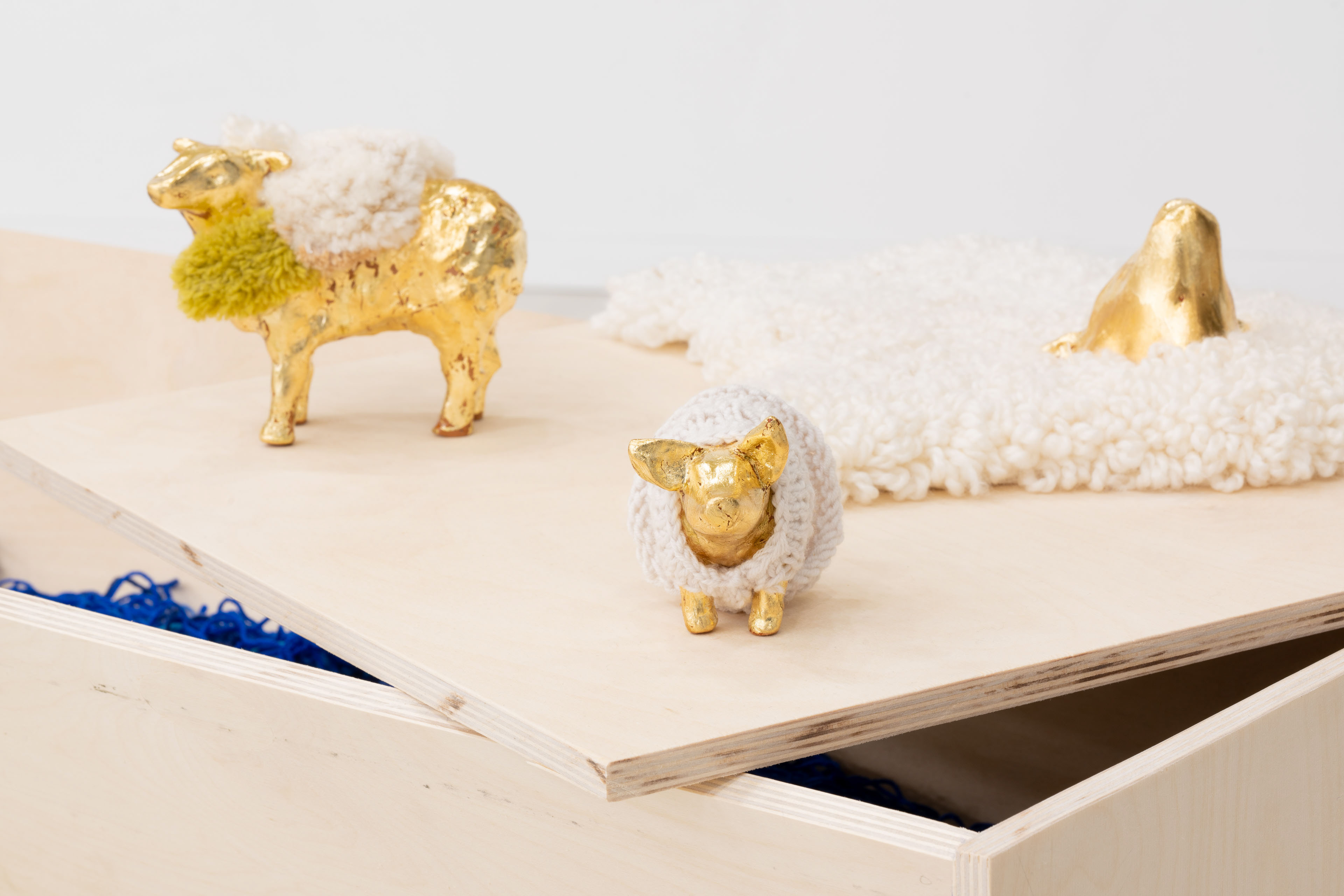
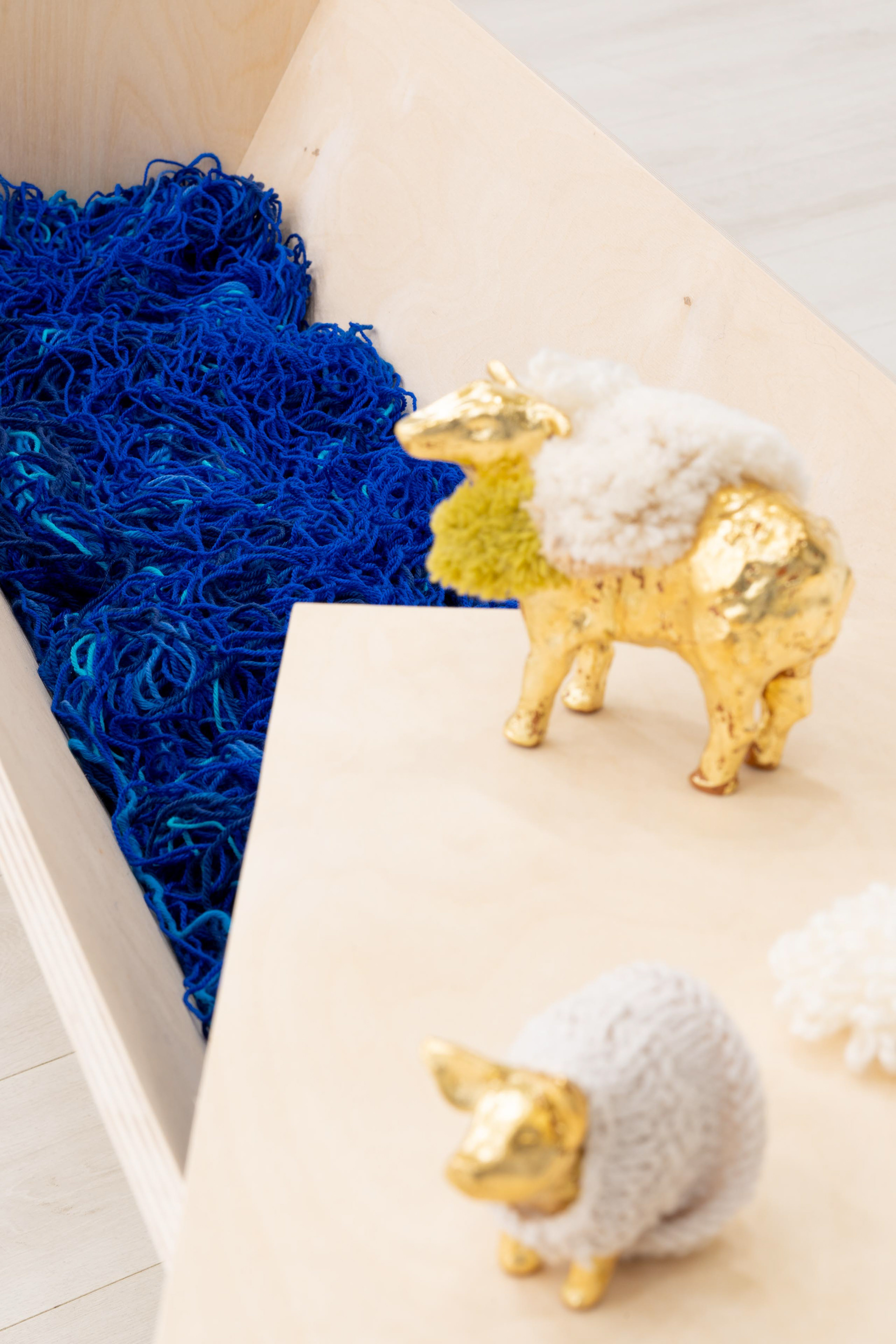
Do you remember when Grandpa sew coats for the piglets?
(ceramics, polyester yarns, 12×10×8 cm, 2022.)
(ceramics, polyester yarns, 12×10×8 cm, 2022.)
You take away
(ceramics, hand tufting, punching, mixed yarns, 15×15×10 cm, 2022.)
(ceramics, hand tufting, punching, mixed yarns, 15×15×10 cm, 2022.)
Okey, but where did she get the golden thread?
(ceramics, punching, mixed yarns, 30×30×10 cm, 2022.)
(ceramics, punching, mixed yarns, 30×30×10 cm, 2022.)
The solo exhibition of Réka Vidra, titled “Water-trough of imaginary friends” is a walk-in storybook, a realm of childhood fantasies with objectified illustrations. Like any other enchanted place, it can only be approached in a magical way – by finding the centre of the labyrinth following these instructions: “Take a map and look for the 8th district in Budapest. After this, it is easier to rely on your eyes, since the next step is to dive deep in the structure of the city to come across a giant, concrete building with multiple stories, surrounded with strange, small, rectangular windows. Should you run into something fitting this description, don’t be discouraged if it seems a bit unfriendly at first sight, not even if by stepping inside you have a hunch that a strict school is hidden here. If, after the first steps you start losing your sense of direction and forgetting from where you have come from, then you can be almost sure that you are roaming around the right place. However, you can only be certain when reaching the seventh floor you find the door, which opens to a stable and to the Buda castle at the same time.”
-
The “Water-trough of imaginary friends” is scene from the life of the residents of a stable, which is kneaded together and compiled by Réka Vidra partly from the lingering memories of the animals and plants she grew up among. She animates these non-human beings (which stand in the centre of her artistic interest) and elements from their domesticated environment through textile-experiments: mainly with punched and hand-tufted carpets and coloured concrete-castings (often with inserting knotted or punched textiles.) One-way plastic food-containers serve as moulds for these castings, which evoke different animals, plants, microscopic beings, uni-and multicellular organisms, bacteria, viruses and fungi.
Making textiles is one of the activities which have remained for the longest in the category of traditionally feminine household work – this could be upheld by the market through employing female workers only. On the other hand, concrete (as the most wide-spread artificial material of construction) has been considered to belong to the realm of traditionally masculine work. Although both textile and concrete are important elements of Réka Vidra’s interdisciplinary works, the works elude interpretation along gender related questions. Rather, the objects born from their compilation evoke childhood handcraft objects. The works presented at the exhibition have a positive aura both together and on their own, their soft colours evoke peaceful and pleasant feelings, which are further deepened by the use of solid and lasting materials.
Réka Vidra, in her newest works presented at the exhibition includes and translates different theories of critical animal studies, in order to find answers to the question whether there could be an alternative way of thinking, which exceeds the anthropocentric point of view of the western culture – and if there is, how art could help integrating this way of thinking to the reigning approach of our society. However, the “Water-trough of imaginary friends” is not intended to be educational, does not give a concrete, ready-to-go solution in the space and on the walls, but on the contrary: the soft, pastel paradise of the exhibition space is a place for empathy and sensitization. The “imaginary friends” and the different castings (by evoking pure and fine sentiments, and by the power of introducing childhood memories to the game) intend to help creating a partnership accepting both human and non-human beings, where love is a lingua franca.
Nóra Gábriel | curator
